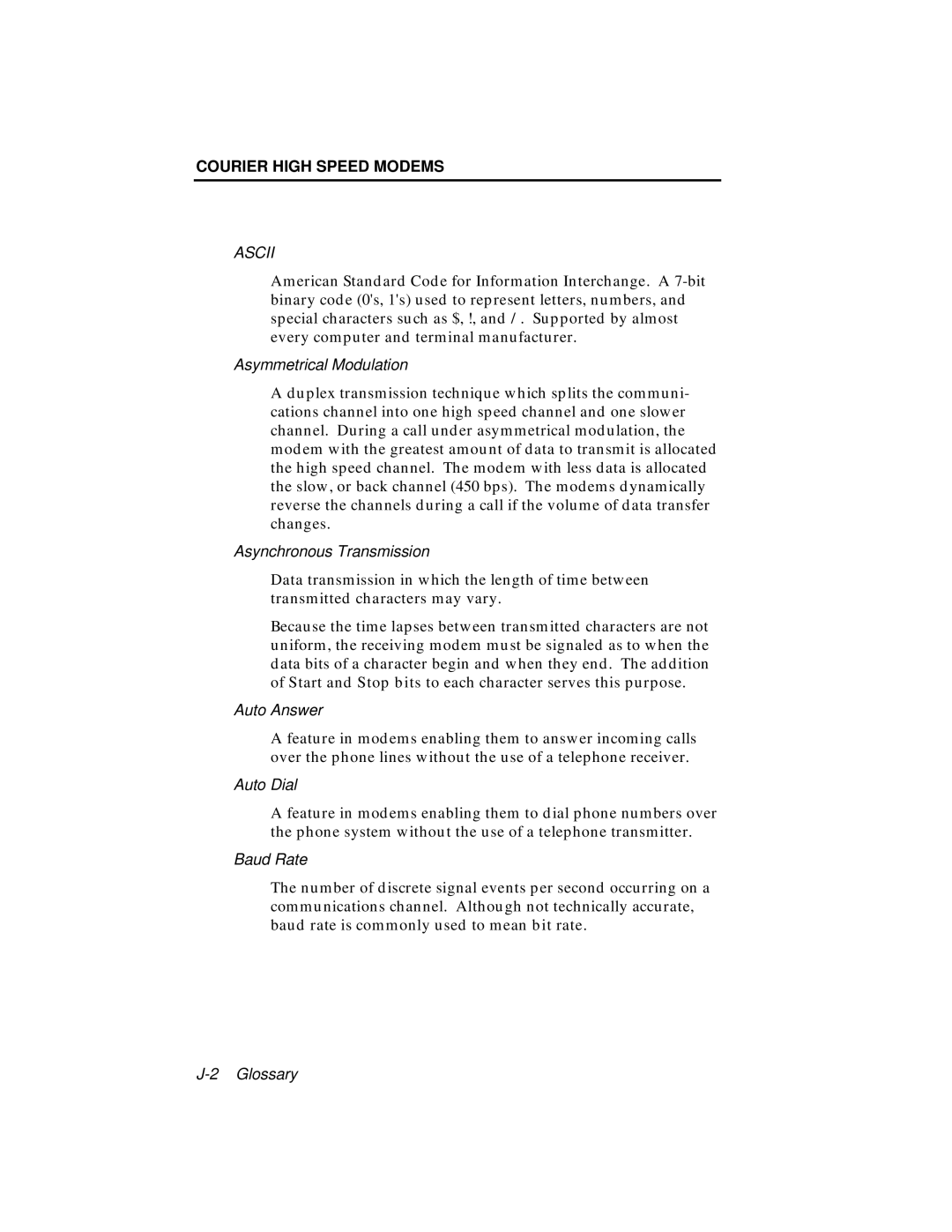COURIER HIGH SPEED MODEMS
ASCII
American Standard Code for Information Interchange. A
Asymmetrical Modulation
A duplex transmission technique which splits the communi- cations channel into one high speed channel and one slower channel. During a call under asymmetrical modulation, the modem with the greatest amount of data to transmit is allocated the high speed channel. The modem with less data is allocated the slow, or back channel (450 bps). The modems dynamically reverse the channels during a call if the volume of data transfer changes.
Asynchronous Transmission
Data transmission in which the length of time between transmitted characters may vary.
Because the time lapses between transmitted characters are not uniform, the receiving modem must be signaled as to when the data bits of a character begin and when they end. The addition of Start and Stop bits to each character serves this purpose.
Auto Answer
A feature in modems enabling them to answer incoming calls over the phone lines without the use of a telephone receiver.
Auto Dial
A feature in modems enabling them to dial phone numbers over the phone system without the use of a telephone transmitter.
Baud Rate
The number of discrete signal events per second occurring on a communications channel. Although not technically accurate, baud rate is commonly used to mean bit rate.
